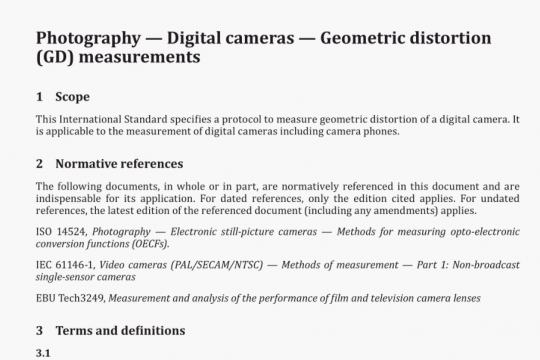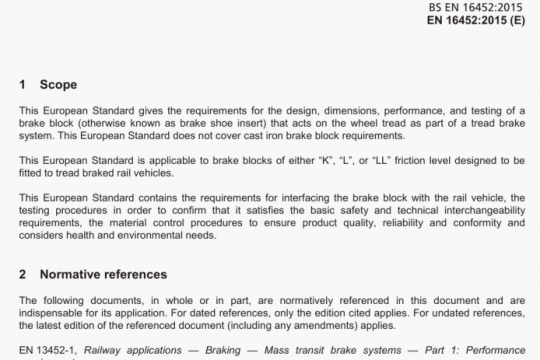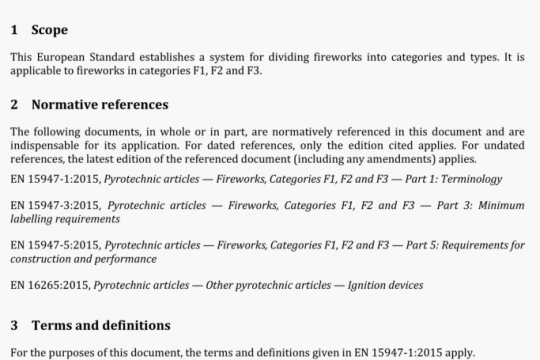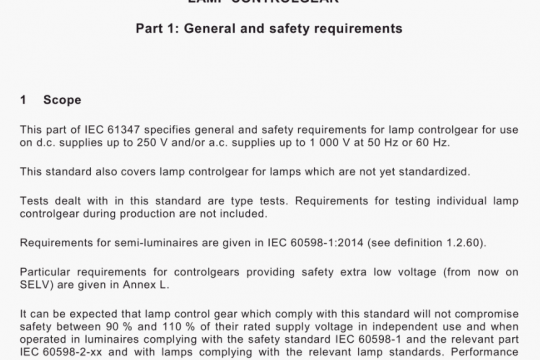BS EN ISO 9038:2021 pdf free
BS EN ISO 9038:2021 pdf free.Determination of sustained combustibility of liquids.
This document specifies a procedure, at temperatures up to 100 °C, to determine whether a liquid product, that would be classified as flammable by virtue of its flash point, sustains combustion at the temperature(s) specified e.g. in regulations.
NOTE Many national and international regulations classify liquids as presenting a flammable hazard based on their flash point, as determined by a recognized method. Some of these regulations allow a derogation if the substance cannot sustain combustion at some specified temperature(s).
The procedure is applicable to paints (including water-borne paints), varnishes, paint binders, solvents, petroleum or related products and adhesives, that have a flash point. It is not applicable to painted surfaces in respect of assessing their potential fire hazards.
This test method is applicable, in addition to test methods for flash point, for assessing the fire hazard of a product.
2 Normative references
The following documents are referred to in the text in such a way that some or all of their content constitutes requirements of this document. For dated references, only the edition cited applies. For undated references, the latest edition of the referenced document (including any amendments) applies.
ISO 1513. Paints and varnishes — Examination and preparation of test samples
ISO 3170, Petroleum liquids — Manual sampling
ISO 3171. Petroleum liquids — Automatic pipeline sampling
ISO 15528. Paints, varnishes and raw materials for paints and varnishes — Sampling
3 Terms and definitions
For the purposes of this document, the following terms and definitions apply.
ISO and IEC maintain terminological databases for use in standardization at the following addresses:
— ISO Online browsing platform: available at https://www.iso.org/obp
— IEC Electropedia: available at http://www.clectropcdia.org/
6 Preparation of apparatus and verification
6.1 The test shall not be carried out in a small confined area because of the risk of explosion.
6.2 Thoroughly clean and dry the test cup and assembly before use, taking care not to damage the surface of the test cup.
6.3 Position the combustibility tester on a level, stable surface and away from strong light (to facilitate observation of a flash or flame). Ensure that the top of the metal block is horizontal.
6.4 Use the gauge (5) to check that the jet is 2,2 mm ± 0,1 mm above the top of the block (see Figure A.2).
6.5 It is essential that the apparatus is set up in a draught free area.
NOTE An air speed of greater than 0,05 rn/s within 50 mm of the top of the test cup can affect the result. Surround the tester on three sides with a draught shield (&) for protection. If a fume hood is used, minimize the draught around the test cup.
6.6 Verify the accuracy of the temperature measuring device (SA) and the barometer (5.9), at least every 12 months or more frequently as indicated by a user verification schedule.
6.7 Verify the performance of the apparatus, using reference materials in accordance with Annex B at least every 12 months or more frequently as indicated by a user verification schedule.BS EN ISO 9038 pdf free download.




